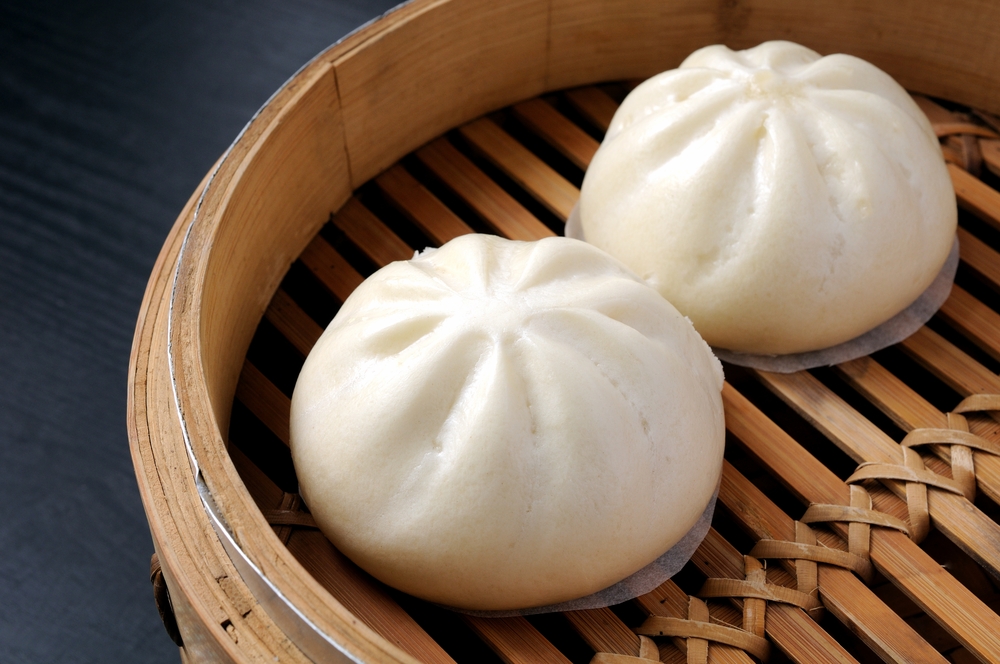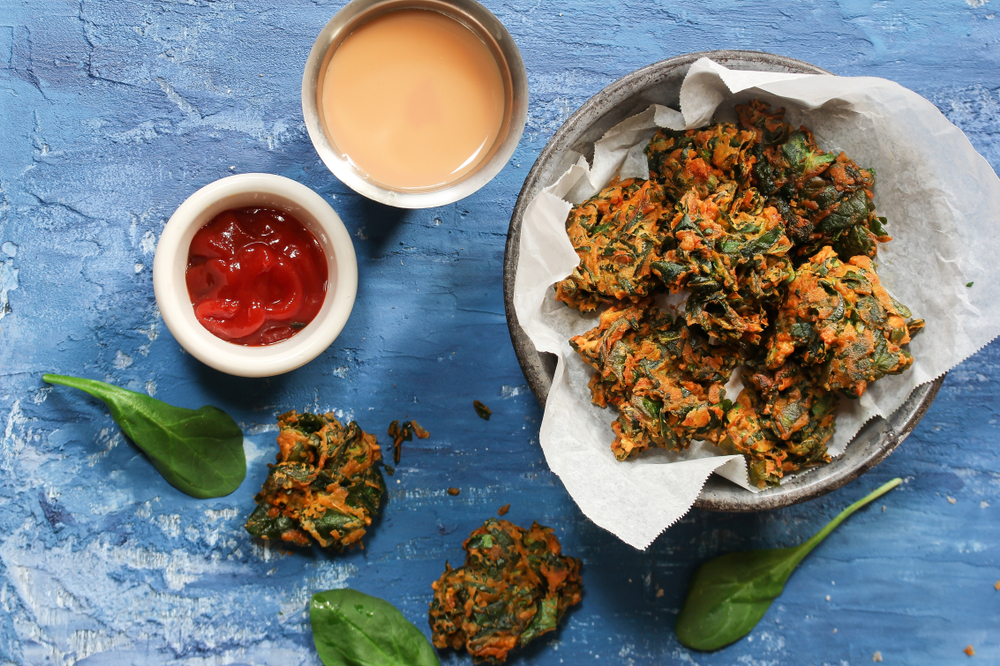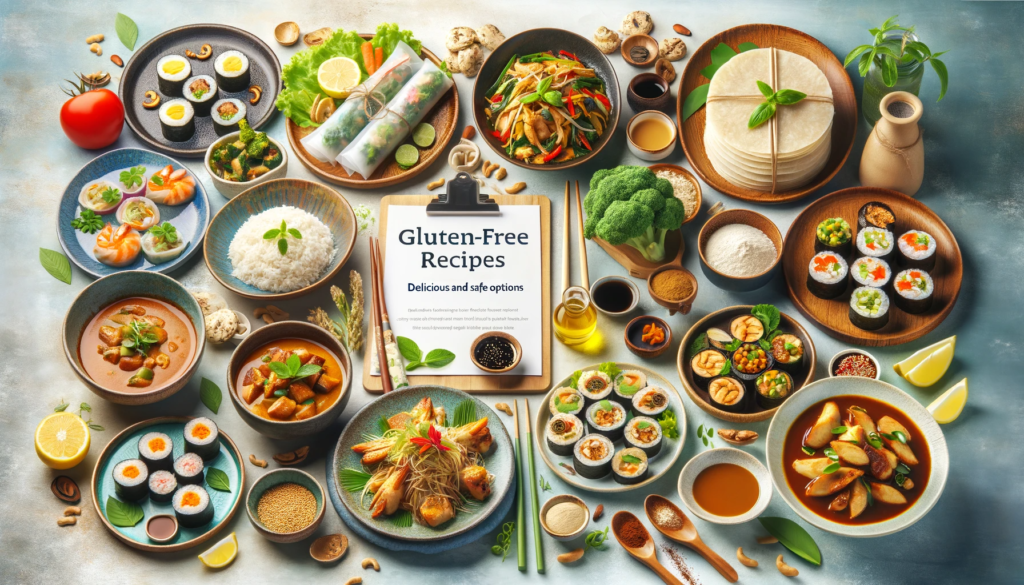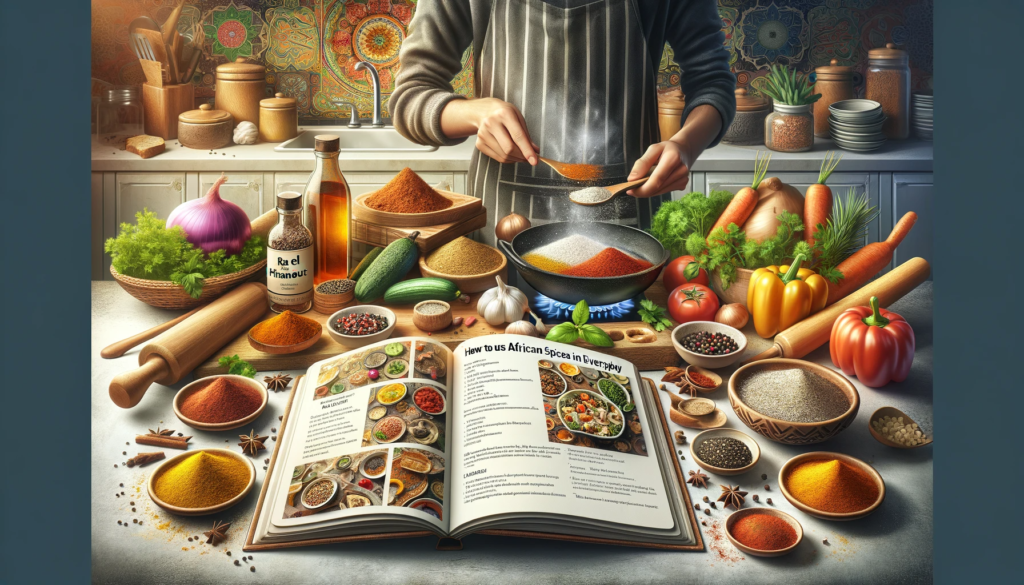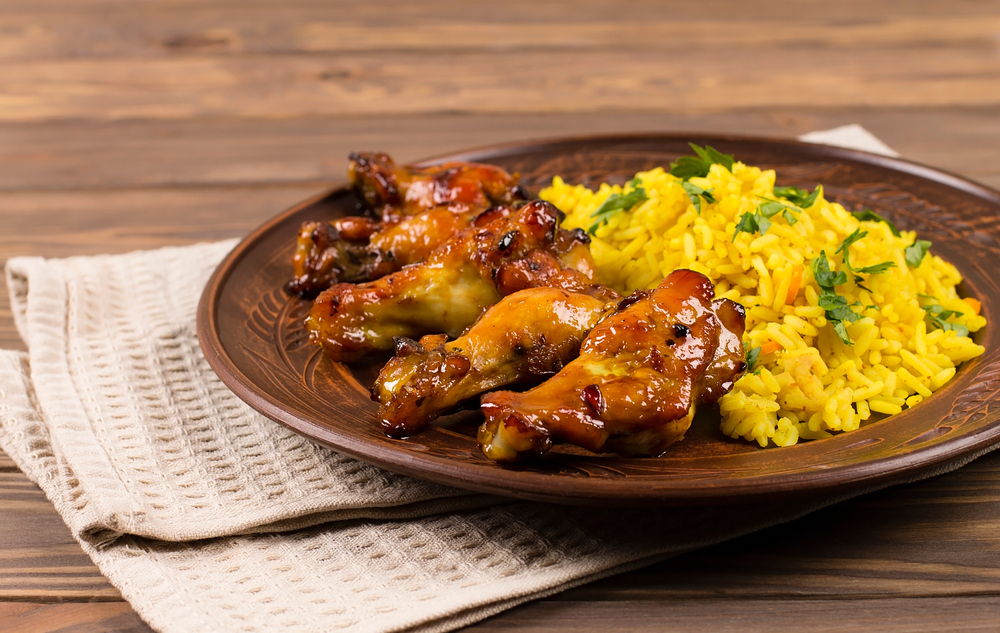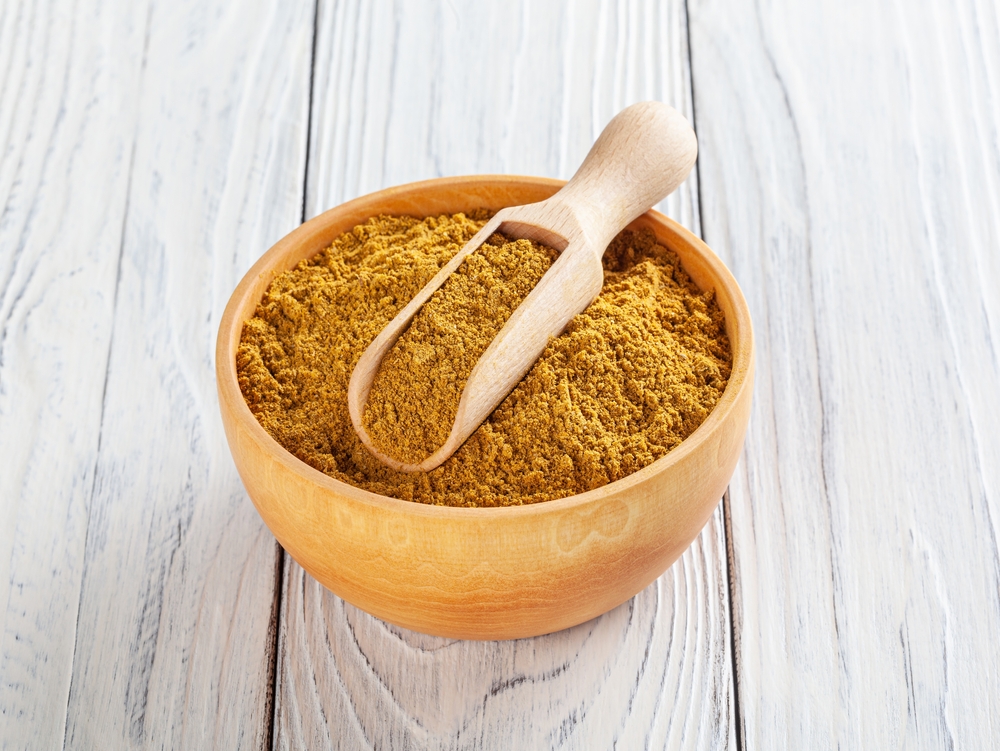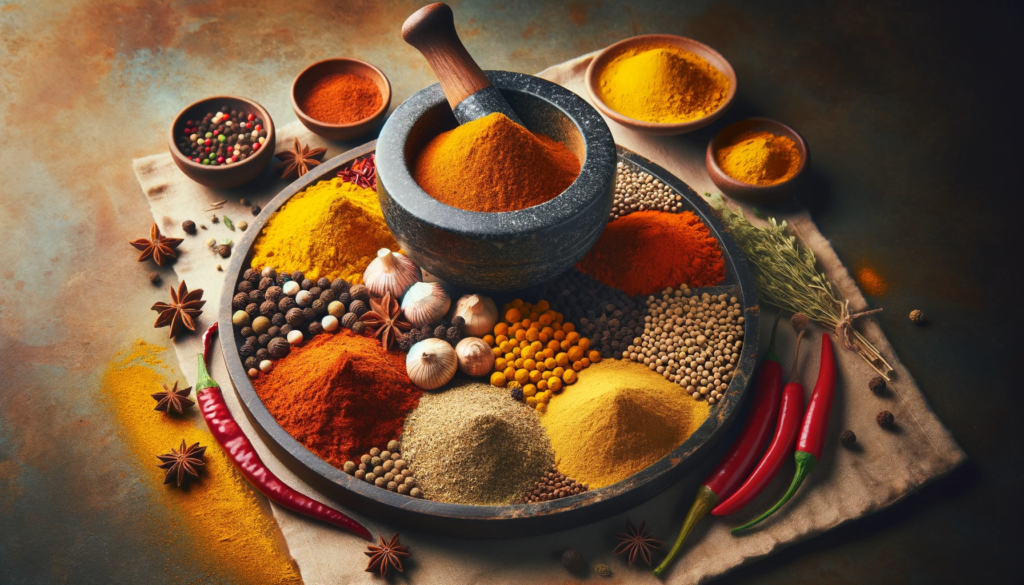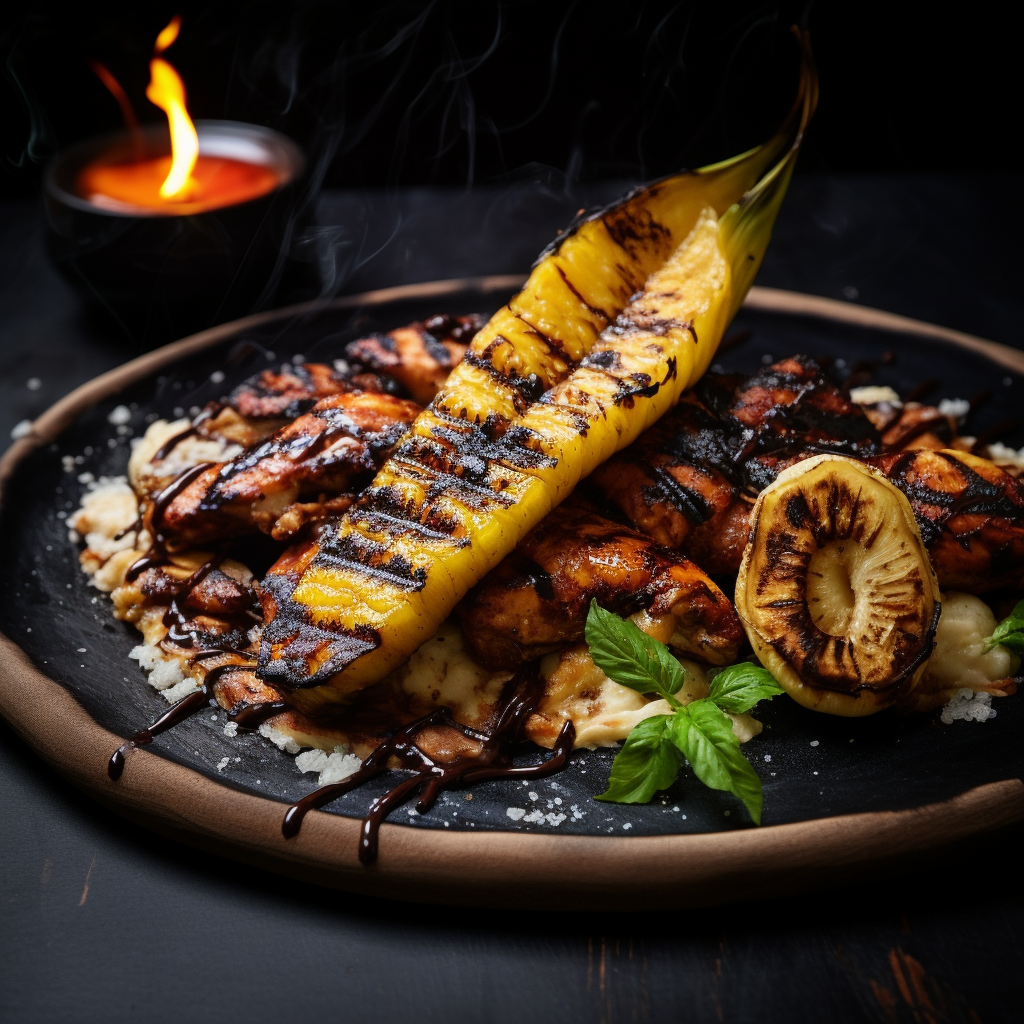Welcome to a culinary expedition into the heart of Cameroon, where we will explore the vibrant flavors and rich traditions embodied in the country’s signature concoction – Mbongo Spice. A unique blend that has tantalized taste buds and spiced up Cameroonian cuisine for centuries, Mbongo Spice is both an art form and a cultural heritage. So join us on this exciting journey as we unveil the secrets of this extraordinary African treasure.
Exploring Mbongo Spice: A Unique Cameroonian Blend
Understanding the Composition and Flavor of Mbongo Spice
Mbongo Spice is a complex mixture of herbs and spices, which typically includes alligator pepper, negro pepper, cloves, and ginger, among other indigenous ingredients. These elements are meticulously selected and ground into a fine powder or paste, imparting a distinctive smoky, slightly bitter, and rich earthy flavor. Known for its dark color, Mbongo Spice significantly transforms the taste profile of any dish, adding depth and an unmistakable Cameroonian flair. Subtle nuances in the blend can vary from one region to another, showcasing the diverse culinary landscape of Cameroon.
The Historical and Cultural Roots of Mbongo Spice in Cameroon
The origin of Mbongo Spice is ingrained in the history of Cameroon, tracing back to the coastal Bantu people, who used the spice blend not only for its flavor but also for its presumed medicinal properties. Historically, it is believed to have played an integral role in traditional ceremonies and rituals. Mbongo Spice symbolizes the soul of Cameroonian communal dining and serves as a linchpin in the country’s culinary identity. The traditional knowledge of its preparation is a heritage passed down through generations, making Mbongo Spice a true cornerstone of Cameroon’s food culture.
The Traditional Use of Mbongo Spice in Cameroonian Cooking
The Classic Mbongo Tchobi and Other Dishes
The crowning glory of Mbongo Spice is most genuinely experienced in the classic Cameroonian dish, Mbongo Tchobi. This stew, rich in spice and character, typically consists of fish or meat marinated and simmered in a sauce laced with Mbongo Spice, offering a deeply flavorful and aromatic feast. Besides this cherished dish, the spice blend is used in a variety of soups, marinades, and broths, bestowing upon them an authenticity that is quintessentially Cameroonian. The versatility of Mbongo Spice allows it to complement an array of proteins and vegetables, solidifying its place in the pantheon of Cameroonian cooking.
Mbongo Spice’s Role in Cameroonian Gastronomy
Mbongo Spice is not merely a flavor enhancer but is also a mark of Cameroon’s rich gastronomic tapestry. Its application extends beyond the household kitchen into the realms of street food and fine dining, where chefs utilize its bold flavor to create dishes that resonate with the soul of the land. It encapsulates the biodiversity of Cameroon’s terroir and is used judiciously to craft meals that speak volumes about the nation’s cultural ferment and agricultural bounty. The role of Mbongo Spice in Cameroonian cuisine is thus both foundational and transformative, reflecting the spirit of innovation that characterizes Cameroon’s food scene.
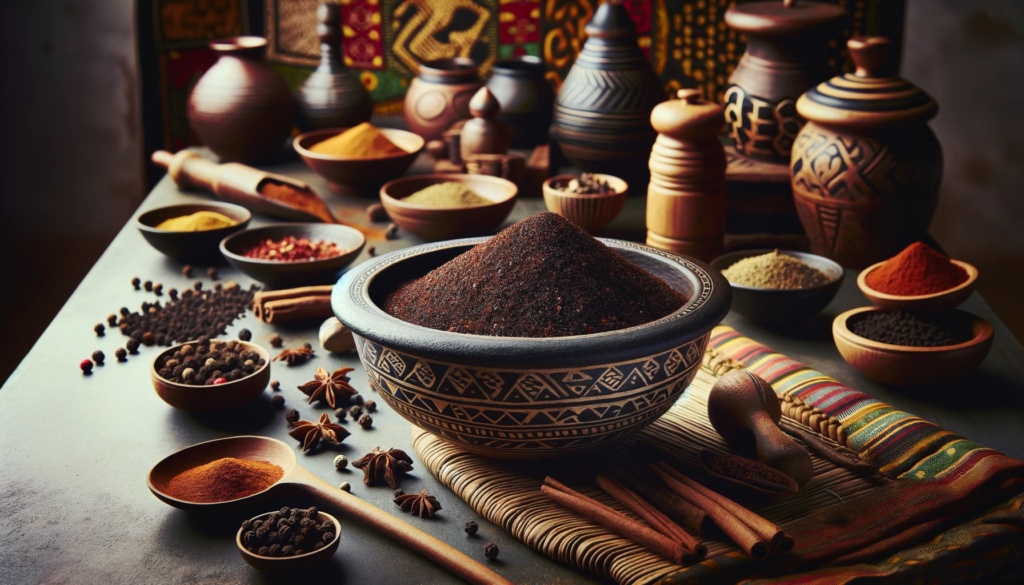
Crafting and Cooking with Mbongo Spice at Home
How to Prepare Your Own Mbongo Spice Blend
Preparing your own Mbongo Spice blend at home is an adventurous foray into Cameroonian gastronomy. Start by sourcing quality ingredients like alligator pepper, dried thyme, and peppercorns. Roast these spices gently to release their aromatic oils before grinding them to a fine powder using a mortar and pestle or spice grinder. The key to a good batch of Mbongo Spice lies in the balance and proportion of each spice, tailored to your personal taste. Once the blend is prepared, it can be stored in an airtight container, ready to infuse your dishes with that signature Cameroonian zest.
Tips and Techniques for Cooking with Mbongo Spice
When cooking with Mbongo Spice, it’s essential to understand its potent flavor profile. Begin by adding small amounts to your dishes, allowing the complex notes to gradually build up. It pairs exceptionally well with meats and fish, which can be marinated for hours to absorb the deep, smoky character of the spice. Another technique is to fry the spice blend in oil before adding other ingredients, a process which enriches the final dish with an intense, savory base. Always remember, the objective when using Mbongo Spice is to create harmonious flavors that celebrate the essence of Cameroonian cookery.
Mbongo Spice Beyond Cameroon
Incorporating Mbongo Spice in Global Cuisine
Savvy cooks and chefs from around the globe are now discovering the wonders of Mbongo Spice, incorporating it into a variety of international dishes. From fusion tacos with Mbongo-spiced fillings to contemporary Mbongo-infused vegetable stir-frys, the use of this Cameroonian staple is steadily growing in the world’s culinary scene. Its ability to meld with different cuisines demonstrates Mbongo Spice’s intrinsic versatility and allure, inviting experimental chefs to explore uncharted territories of flavor and tradition.
Fusion and Innovative Recipes Using Mbongo Spice
Creative culinary aficionados are continuously crafting innovative recipes that feature Mbongo Spice. Imagine a Mbongo-spiced rub for barbecued ribs or a pinch sprinkled over roasted root vegetables, the possibilities are endless. More avant-garde approaches have seen this Cameroonian treasure incorporated into desserts, such as spiced chocolate cakes, where the delicate heat of the Mbongo complements the sweetness of the chocolate. By pushing the boundaries, these fusion recipes build bridges between diverse food cultures, showcasing Mbongo Spice in exhilarating new contexts.
Savoring Cameroon’s Rich Flavors
Authentic Cameroonian Recipes Featuring Mbongo Spice
For those seeking an authentic taste of Cameroon, Mbongo Spice serves as a gateway to an array of traditional recipes that have been the foundation of Cameroonian cuisine for ages. From hearty stews to sumptuous soups, these recipes transport the diner to the vibrant markets and lush landscapes of Cameroon. Cooking these authentic dishes requires an appreciation of the staple ingredients and cooking methods that have been honed over generations, creating a culinary experience that is both deeply rooted in tradition and reflective of the ingenuity of local chefs.
Modern Twists on Traditional Cameroonian Dishes
Modern Cameroonian chefs are also embracing Mbongo Spice, incorporating it into contemporary dishes that speak to the evolving tastes of today’s food enthusiasts. By experimenting with presentation and marrying Mbongo Spice with non-traditional ingredients, these culinary artists are reimagining classic fare and forging a new path for Cameroonian cuisine. This movement acknowledges the importance of honoring culinary heritage while also recognizing the dynamic nature of taste and the embrace of global influences.
Mbongo Spice in Cameroonian Cuisine: FAQs
What is the primary flavor profile of Mbongo Spice?
Mbongo Spice is characterized by its smoky, earthy, and slightly bitter flavor. The unique combination of spices such as alligator pepper, negro pepper, cloves, and ginger contributes to its complex profile, making it a standout feature in Cameroonian cuisine. It has a distinctive color and aroma that brings a deep richness to every dish it graces.
Can Mbongo Spice be used in vegetarian dishes?
Yes, Mbongo Spice is incredibly versatile and can be a wonderful addition to vegetarian and vegan dishes. It enhances the flavors of vegetables, legumes, and grains, providing a hearty and satisfying depth to meat-free preparations. It’s a great way to bring traditional Cameroonian warmth to a variety of plant-based recipes.
How long can Mbongo Spice be stored?
Mbongo Spice, like most spice blends, has a long shelf life when stored correctly. Kept in an airtight container in a cool, dry environment, it can remain fragrant and potent for several months. Ensuring it is sealed properly after each use will help maintain its aromatic properties and effectiveness in cooking.
Are there any health benefits associated with Mbongo Spice?
Mbongo Spice comprises various spices known for their health benefits. For instance, ingredients like ginger and cloves are reputed to have anti-inflammatory and antioxidant properties. Incorporating Mbongo Spice into your dishes can therefore add not only flavor but also potential health benefits to your meals.
What’s the best way to introduce Mbongo Spice to those unfamiliar with it?
To introduce Mbongo Spice to novices, it’s best to start with a dish that allows the spice to shine without overpowering the palate. You could add it to soups, stews, or marinades in moderate amounts, giving newcomers a chance to appreciate its complexity within the context of a familiar base flavor.
Is there a standard composition for Mbongo Spice, or does it vary?
While there are traditional elements that make up Mbongo Spice, the exact composition can vary between regions and individual recipes. This variability allows home cooks and chefs to tailor the mix to their own preferences, making Mbongo Spice a personalized and flexible addition to Cameroonian dishes.
Can Mbongo Spice be mixed with other spice blends?
Mixing Mbongo Spice with other spice blends can be an exciting way to create new flavor profiles. Doing so allows for culinary creativity and could lead to delightful fusions. However, care should be taken to ensure the mixtures complement each other and do not result in an overwhelming or discordant taste.






